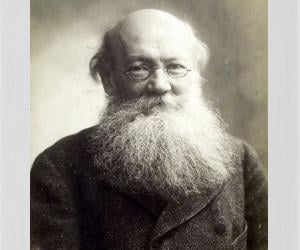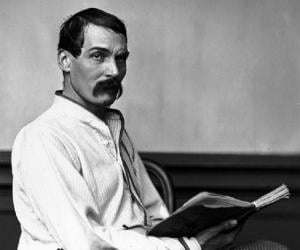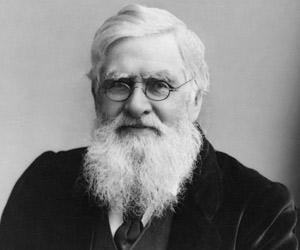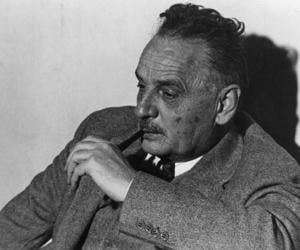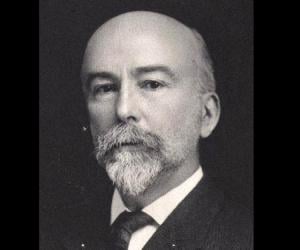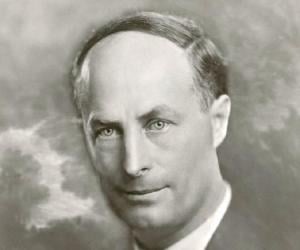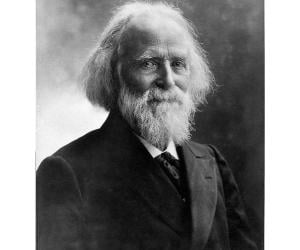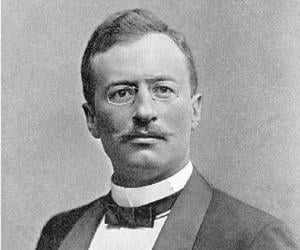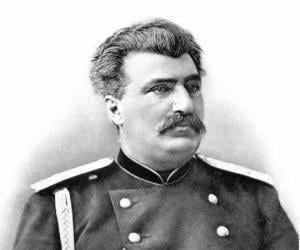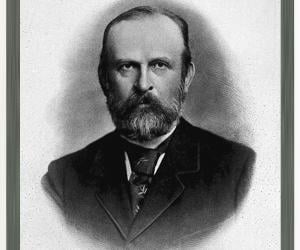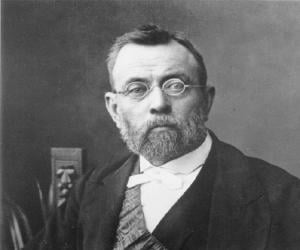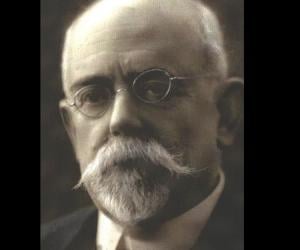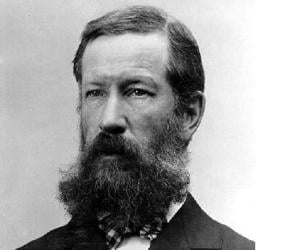Russian philosopher Peter Kropotkin was a passionate advocate of anarcho-communism. He was also an activist, revolutionary, economist, and sociologist. He was arrested and imprisoned for his activism in 1874. However, he managed to escape and lived in exile for over 40 years in different countries across Europe. He returned to Russia after the Russian Revolution in 1917.
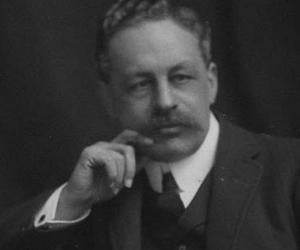
Halford Mackinder was an English geographer, politician, and academic. He is considered one of the founding fathers of geostrategy as well as geopolitics. Mackinder’s work helped establish geography as a separate discipline in the UK. An influential academic, Halford Mackinder held important positions in popular universities, including the University Extension College and the London School of Economics.
Richard Francis Burton was a British explorer, soldier, and scholar. He is best remembered for his explorations in Africa, Asia, and the Americas. Along with John Hanning Speke, Burton was the first European to witness the Great Lakes of Africa. A prolific writer, Burton wrote several scholarly articles about numerous subjects like sexual practices, falconry, human behavior, travel, and ethnography.
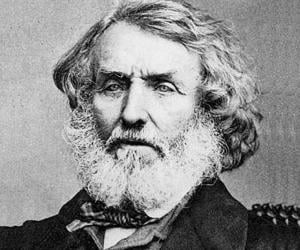
George Everest was a British geographer and surveyor. From 1830 to 1843, he served as Surveyor General of India. His work and contributions were honored by naming Mount Everest, the world's highest peak, after him.
British naturalist Alfred Russel Wallace is largely remembered for his theory of evolution through natural selection, which inspired Charles Darwin’s studies. He began his career as a surveyor’s apprentice and later introduced concepts such as reinforcement in animals, also known as the Wallace effect. He was awarded the Order of Merit.
Carl O. Sauer was an American geographer best remembered for his association with the University of California, Berkeley, where he was a professor of geography from 1923 to 1957. Over the course of his career, Carl O. Sauer was honored with several prestigious awards, such as the Charles P. Daly Medal, Alexander von Humboldt Medal, and Victoria Medal.
William Morris Davis was an American geologist, geographer, meteorologist, and geomorphologist. Often referred to as the father of American geography, Davis is credited with founding the Association of American Geographers. He is also remembered for his association with the Geological Society of America, where he served as the president. In 1919, he was awarded the Royal Geographical Society's Gold Medal.
Douglas Mawson was an Australian Antarctic explorer, geologist, and academic. Counted among the most important leaders of the Heroic Age of Antarctic Exploration, Mawson was honored with a knighthood in 1914. Best remembered for his contribution to Australian geology, Mawson was featured on the Australian one-hundred-dollar note from 1984 to 1996.
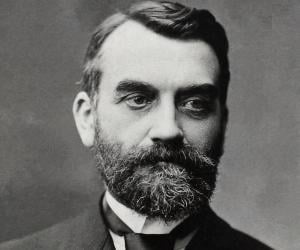
French geographer Paul Vidal de La Blache is largely considered the founding father of modern French geography. He originated the concept of genre de vie. Apart from working as a geography professor at Sorbonne, he penned iconic works such as Tableau de la géographie de la France.
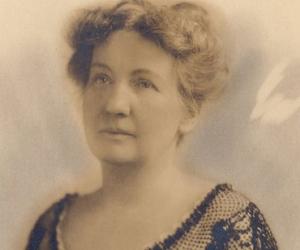
Ellen Churchill Semple was an American geographer best remembered for her association with the Association of American Geographers, where she served as the first female president. Semple made immense contributions to the development of geography as discipline in the US, especially studies of human geography. In 1914, Semple was honored by the American Geographical Society with the Cullum Geographic Medal.
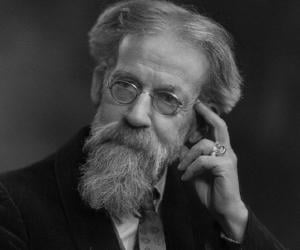
Apart from being a sociologist and biologist, Patrick Geddes was known for his impeccable sense of town planning. While he initially taught botany in Dundee, he later turned to sociology and conducted studies in India, Mexico, and other countries. He was eventually knighted for his achievements.
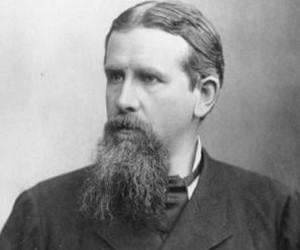
Friedrich Ratzel was a German ethnographer and geographer. He was the first person to use the term Lebensraum, which would later become an important and popular word among the National Socialists. Also an influential writer, Friedrich Ratzel's works served as a justification for imperial expansion.
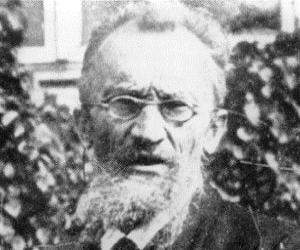
Wladimir Köppen was a Russian-German meteorologist, geographer, botanist, and climatologist. He is best remembered for publishing the Köppen climate classification system, which is used even today. Wladimir Köppen made important contributions to many branches of science. He is also credited with coining the term aerology.
Elisee Reclus was a renowned French geographer, writer, and anarchist best known for his 19-volume masterwork, La Nouvelle Géographie universelle, la terre et les hommes ("Universal Geography"). He received the Gold Medal of the Paris Geographical Society for this work in 1892. He opposed cruelty to animals and advocated nature conservation. He was also a proponent of naturism.
Sven Hedin was a Swedish topographer, geographer, photographer, explorer, illustrator, and travel writer. He is best known for making four expeditions to Central Asia. He later shared his experience in a book titled From Pole to Pole. A respected explorer, Hedin was honored with several prestigious awards and medals during his lifetime.
Nikolay Przhevalsky was a Russian imperial geographer. A renowned explorer of Central and East Asia, he traveled through regions then unknown to the West. He is credited to have made a substantial contribution to European knowledge of Central Asian geography. However, despite his attempts, he could never reach his ultimate goal, the holy city of Lhasa in Tibet.
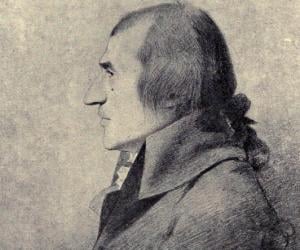
James Rennell was an English historian and geographer. A pioneer of oceanography, Rennell is often referred to as the Father of Oceanography. Rennell, who served as a Surveyor General of Bengal, India, is credited with producing some of the earliest accurate maps of Bengal. James Rennell is also credited with co-founding the Royal Geographical Society in London in 1830.
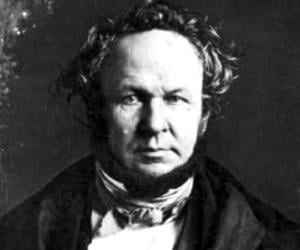
Henry Schoolcraft was an American geologist, geographer, and ethnologist. He is best remembered for his studies of Native American cultures. Henry Schoolcraft is also credited with founding The Journal of Education, America's first journal on public education.
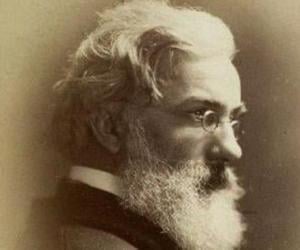
Ernst Georg Ravenstein was a German-English cartographer and geographer. His efforts to introduce scientific methods in cartography in the United Kingdom earned him the first Victoria gold medal from the Royal Geographical Society. Ernst Georg Ravenstein is also credited with establishing a sporting association in London called the German Gymnastics Society in 1861.
Ferdinand von Richthofen, also known as Baron von Richthofen, was a German geographer who discovered quite a few places in and around China, thus contributing to his book China, the Results of My Travels and the Studies Based Thereon. He worked on chorography and chorology and also developed geomorphology.
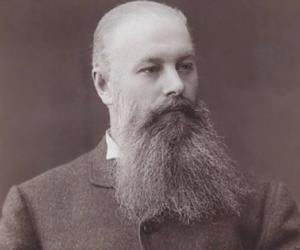
Russian ecologist, geomorphologist, and soil scientist Vasily Dokuchaev initially taught at the University of St. Petersburg and was later associated with the Novo-Aleksandr Institute of Agriculture and Forestry. He developed a soil classification system that explained the 5 factors for soil formation. The city of Dokuchaievsk in Ukraine is named after him.
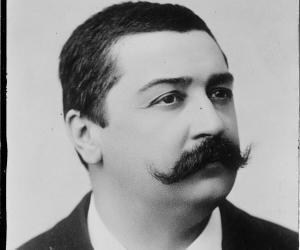
Roland Bonaparte was the grandson of Lucien Bonaparte, who was the brother of Emperor Napoleon I. A geographer and photographer, he was part of the research on the Sami community of Norway and the Australian Aborigines. He also headed the Société de Géographie and the Société Astronomique de France.
Ferdinand von Mueller was a German-Australian geographer, physician, and botanist. He is credited with founding the National Herbarium of Victoria, the oldest scientific institution in Victoria. He is also credited with naming several Australian plants. Such is his popularity that many plants, animals, journals, and places in Australia are named after him.
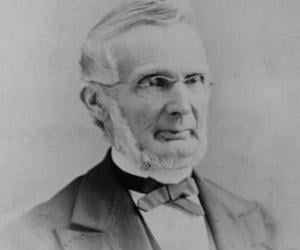
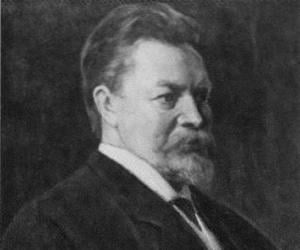
Rudolf Kjellén was a Swedish politician, geographer, and political scientist. Apart from coining the term geopolitics, Kjellén is also credited with laying the foundations for the German Geopolitik. Rudolf Kjellén also served as a professor of political sciences and statistics at the University of Gothenburg.
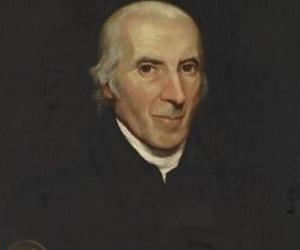
Jedidiah Morse was a geographer best remembered for his textbooks, which became primary study materials for students in the US. His textbooks earned him the nickname father of American geography. Jedidiah Morse also served as a teacher and pastor during his illustrious career.
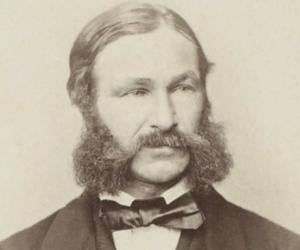
German explorer and geographer Heinrich Barth was a pioneering European explorer of Africa. A linguist, he was not just fluent in languages such as French and Arabic, but he also learned several African languages. He also penned a 4-volume account of his experiences in Africa and taught at the University of Berlin.
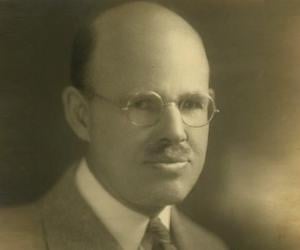
Ellsworth Huntington was an American educator who worked at Yale University as a professor of geography during the early 20th century. He is best remembered for his studies on economic geography, environmental determinism, economic growth, and scientific racism. Ellsworth Huntington also served as the president of the Association of American Geographers as well as the Ecological Society of America.
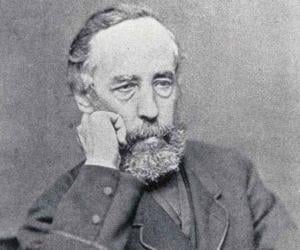
Argentine explorer Francisco Moreno, better known as Perito Moreno, is remembered as one of his country’s greatest heroes. His explorations helped define the border of Chile. He discovered Patagonian treasures such as Mount Fitz Roy and established Argentina’s first national park, Nahuel Huapi. His accolades include the Cullum Geographical Medal.
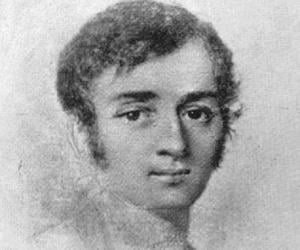
French explorer and mathematician Joseph Nicollet had begun his career as a math teacher at age 19. Faced with financial issues, he later moved to the U.S., where he was financially helped by a wealthy family. His exploration of the Mississippi and Missouri rivers helped him chart maps of the region.
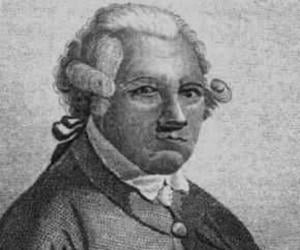
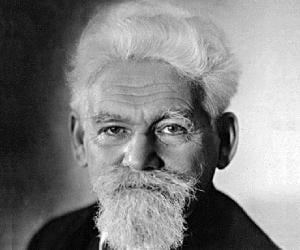
Russian geographer and zoologist Lev Berg served the Soviet Geographical Society as its president and laid down his own theory of evolution, nomogenesis, as an alternative to Darwin’s theory. Remembered for his pioneering research on limnology and ichthyology, he also contributed to the domain of zoogeography.
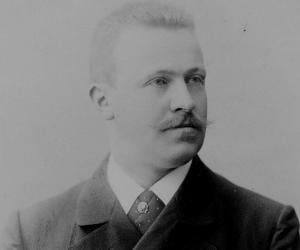
Erich von Drygalski was a German geographer, polar scientist, and geophysicist. He is best remembered for leading two expeditions to explore the unexplored area of Antarctica in the early 1890s with the help of the Society for Geoscience of Berlin. Erich von Drygalski also served as a professor of geophysics and geography in Berlin.
Henry Gannett was an American geographer best remembered for his association with the United States Geological Survey, where he served as the chief geographer from its founding until 1902. Nicknamed the father of mapmaking in America, Henry Gannett is also known as a founding member of the National Geographic Society, where he served as president.
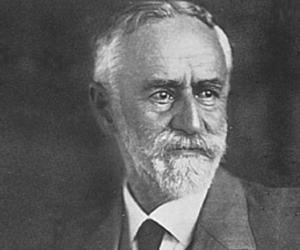
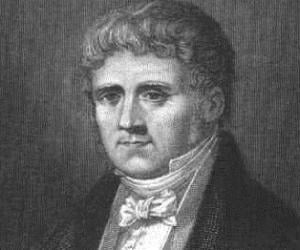
Conrad Malte-Brun was a Dano-French journalist and geographer. Malte-Brun is best remembered for coining the name Indo-China as well as the name Oceania, a geographic region that includes Melanesia, Micronesia, Australasia, and Polynesia, around 1812. Conrad Malte-Brun is also known as the father of Victor Adolphe Malte-Brun, who was also a famous geographer.
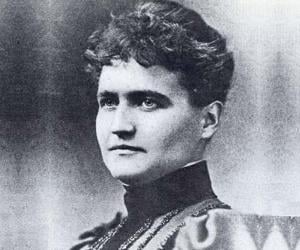
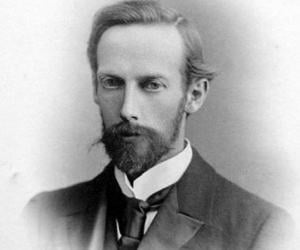
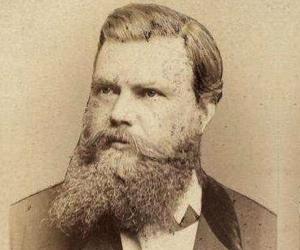
German explorer Karl Mauch made quite a few significant discoveries of geological and archaeological significance in southern Africa, such as the goldfields of Hartley Hills and the ruins of Great Zimbabwe. He, however, had initially intended to unearth the ruins of the biblical city of Ophir.
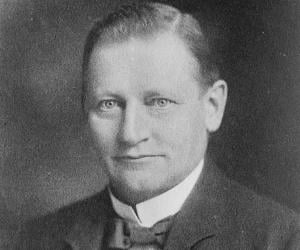
German geographer and geologist Albrecht Penck is noted for exercising a major influence on the development of modern German geography and also for his research that confirmed the four ice ages of the European Pleistocene (Gunz, Mindel, Riss, Würm). He co-authored Die Alpen im Eiszeitalter with Eduard Bruckner, which served as a standard reference on the ice ages for many decades.
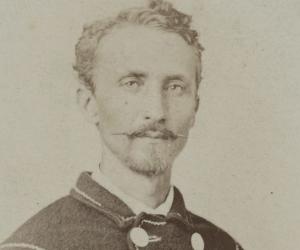
Being the son of a physician, geographer Gerhard Rohlfs was expected to take up medicine but was more interested in exploring uncharted territories and thus joined the French Foreign Legion. Best known for his journeys across North Africa, he had initially learned Arabic to travel to Morocco disguised as an Arab.
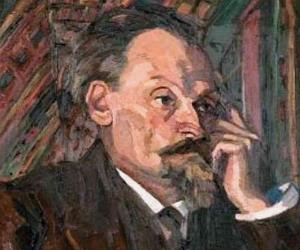
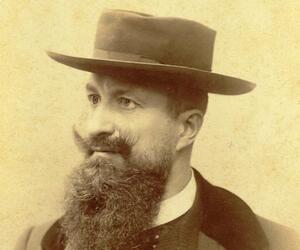
Italian explorer Luigi Robecchi-Bricchetti was the first person from Europe to cross the Somali peninsula. An illegitimate son of a landowner, he was raised by his mother. Initially interested in civil engineering, he later deviated toward geography and geology, even learning languages such as Arabic and German.
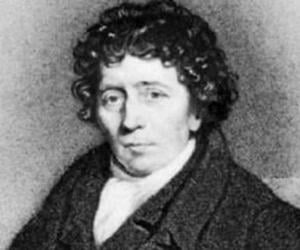
Aaron Arrowsmith was an English cartographer, publisher, and engraver. Aaron, who belonged to the famous Arrowsmith family of geographers, is best remembered for producing the maps of Scotland and North America, which are counted among his most celebrated productions.
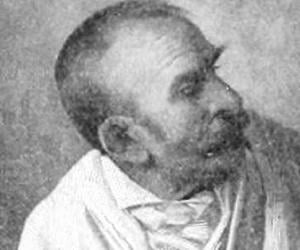
Irish-born French geographer Arnaud-Michel d'Abbadie is remembered for his expeditions in Algeria and Ethiopia with his brother, Antoine d'Abbadie d'Arrast. The path-breaking book Douze ans dans la Haute-Ethiopie was a written account of their experiences, which depicted the military and court life of Ethiopia, formerly known as Abyssinia.

German ethnologist Robert Fritz Graebner is known as a pioneering figure of the Vienna School of Ethnology and promoted the theory of Kulturkreise, or culture complex. During World War I, he was interned in Australia as an enemy but utilized his time in studying the different types of culture there.
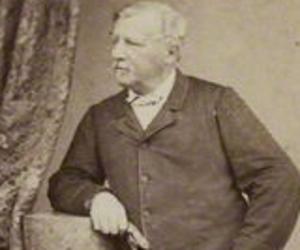
Charles Tilstone Beke was an English geographer, traveler, and Biblical critic. He is best remembered for his book Origines Biblicae or Researches in Primeval History, which attempts to recreate mankind's early history with the help of geological data. Although the book did not impress religious leaders and supporters of the Book of Genesis, Beke's work was appreciated by many scholars.

Born to renowned travel writer Ludwig Passarge, Siegfried Passarge was naturally interested in geography and studied the subject in Jena and Berlin. Initially a military physician, he later became a geologist and surveyor and eventually a professor. Known for his research on southern Africa, he also pioneered racial geography.
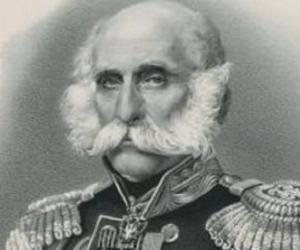
German-Russian explorer, geographer, and navigator Friedrich Benjamin von Lütke, better known as Fyodor Litke, was mostly reputed for his Arctic explorations. He was associated with St. Petersburg’s Russian Academy of Science and Paris’s French Academy of Science. He contributed immensely to the documented geography of Alaska.
